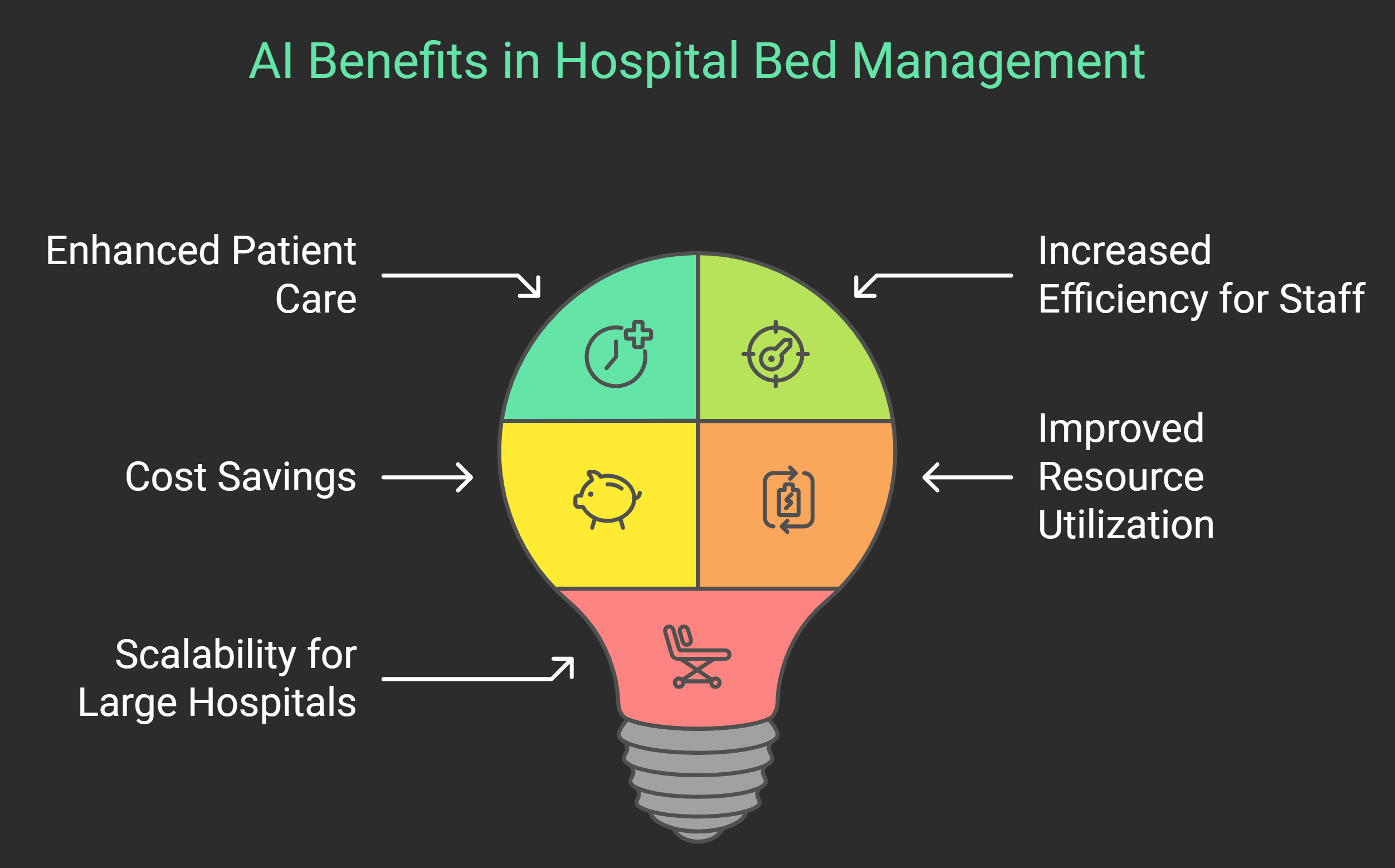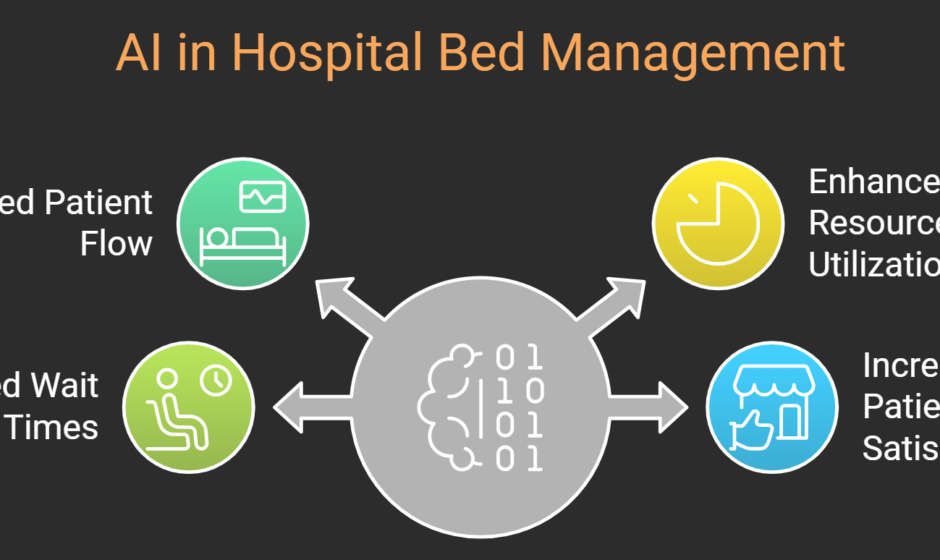Efficient bed management is one of the most critical aspects of hospital operations. It directly affects patient care, resource allocation, and operational efficiency. The introduction of AI-powered solutions for bed management and hospital occupancy optimization has revolutionized the way hospitals manage their resources. By leveraging tools like automated bed allocation, real-time tracking, and predictive analytics, healthcare facilities can enhance patient satisfaction while optimizing their resources.
This blog will delve into the advantages of using AI in hospital bed management, the steps for implementation, and how it benefits hospitals, staff, and patients alike.
Why Is Bed Management Crucial in Healthcare?
Efficient bed management ensures that patients are admitted, transferred, and discharged promptly without unnecessary delays. Poor bed management often results in long waiting times, overcrowded emergency departments, and dissatisfied patients. Traditional bed management methods rely on manual tracking and communication between departments, leading to inefficiencies and errors.
With AI, hospitals can overcome these challenges by automating processes, providing real-time data on bed availability, and predicting future bed demand. AI-based systems not only reduce the workload of hospital staff but also improve patient outcomes.
How AI Optimizes Bed Management and Occupancy
Real-Time Bed Availability
AI tools provide real-time data on bed availability, ensuring that hospital staff can make quick and informed decisions. This is especially critical in emergency situations where delays can jeopardize patient care.
- Real-time tracking systems integrate with the hospital management system, creating a centralized dashboard for all bed-related data.
- Staff can instantly check bed occupancy across departments, reducing the need for time-consuming manual updates.
Predictive Analytics for Bed Demand
AI-powered predictive analytics use historical data, patient inflow trends, and seasonal patterns to forecast future bed demand.
- Hospitals can prepare for peak periods, such as flu seasons or holiday spikes, by optimizing their resources in advance.
- Predictive models help allocate beds more efficiently, reducing instances of underutilization or overcrowding.
Automated Bed Allocation
With automated bed allocation, AI ensures that patients are assigned to appropriate beds based on factors such as medical needs, proximity to specific care units, and treatment urgency.
- Automation eliminates the possibility of human error, ensuring fairness and efficiency.
- It accelerates the admission process, improving patient satisfaction.
Integration with Other Systems
AI systems seamlessly integrate with existing hospital management systems and other healthcare platforms, such as AI chatbots in healthcare, to create a unified approach to hospital operations.
Benefits of AI for Bed Management and Occupancy Optimization

1. Enhanced Patient Care
Patients benefit from quicker admission, seamless transfers, and reduced waiting times. AI systems ensure that no bed remains idle when there are patients in need.
2. Increased Efficiency for Staff
Hospital staff can focus on critical tasks rather than manual bed tracking or allocation. With AI automating repetitive processes, staff efficiency improves significantly.
3. Cost Savings
Optimized occupancy reduces wasted resources, such as idle beds or unnecessary patient transfers. This leads to significant cost savings for hospitals.
4. Improved Resource Utilization
AI ensures that every available bed is used effectively, minimizing the strain on hospitals during peak demand.
5. Scalability for Large Hospitals
Large healthcare facilities often struggle with managing thousands of beds across multiple departments. AI tools are scalable and can handle even the most complex hospital environments.
Real-World Applications of AI in Bed Management
AI Chatbots in Healthcare for Occupancy Insights
AI chatbots play a crucial role in hospital operations by providing instant updates on bed availability, patient discharge schedules, and expected admissions. These chatbots also assist patients by guiding them through admission processes or answering queries about waiting times.
For instance, a hospital using AI chatbots reduced patient wait times by 30% by streamlining the communication process.
Integration with Hospital Management Systems
Modern hospital management systems equipped with AI capabilities enable hospitals to track occupancy in real time. They consolidate data from various departments, making it easier for staff to allocate resources efficiently.
In one case study, a large metropolitan hospital improved its bed turnover rate by 25% after implementing an AI-integrated hospital management system.
Automation in Healthcare Operations
AI-driven automation in healthcare goes beyond bed management. Hospitals can use AI for scheduling surgeries, optimizing staff shifts, and managing inventory, further enhancing overall efficiency.
Steps to Implement AI for Real-Time Bed Allocation
Step 1: Assess Current Processes
Hospitals need to evaluate their existing bed management practices to identify inefficiencies that AI can address.
Step 2: Choose an AI Solution
Select AI tools that cater specifically to hospital needs, such as real-time tracking or predictive analytics for bed demand.
Step 3: Integrate with Existing Systems
Ensure seamless integration of AI with the hospital management system to consolidate data and streamline operations.
Step 4: Train Staff
Staff training is essential to ensure that hospital employees can effectively use AI tools and interpret data analytics.
Step 5: Monitor and Refine
AI systems require regular monitoring and refinement to adapt to changing hospital needs and improve accuracy.
Challenges of Implementing AI in Bed Management
While AI offers numerous benefits, implementing it comes with challenges:
- Data Privacy: Hospitals must ensure that patient data remains secure and complies with regulations such as HIPAA.
- Integration Complexity: Integrating AI tools with existing hospital systems requires significant technical expertise.
- Initial Costs: The upfront investment for AI systems can be high, although the long-term savings often justify the expense.
Statistical Insights on AI in Bed Management
- Hospitals using AI for bed management have reported a 30% reduction in patient waiting times (Source: Healthcare IT News).
- Predictive analytics in hospital operations has led to a 20% improvement in resource utilization (Source: McKinsey).
- Automation of bed allocation processes reduces manual errors by up to 40%, enhancing efficiency and accuracy (Source: HIMSS Analytics).
User Experience with AI Bed Management
Both patients and staff benefit significantly from AI-powered bed management systems. For patients, the reduction in waiting times and seamless transfers lead to a better overall experience. They feel valued and cared for, knowing their needs are addressed promptly.
For healthcare staff, the integration of AI systems alleviates the burden of manual tracking and decision-making. Staff can focus on delivering high-quality care, while the AI handles administrative tasks. Hospitals that have adopted these systems report improved morale among employees and higher patient satisfaction scores.
Conclusion
The integration of AI in bed management and hospital occupancy optimization is transforming healthcare operations. From real-time tracking and predictive analytics to automated allocation and system integration, AI ensures that hospitals can manage their resources more effectively while delivering exceptional patient care. By embracing AI, hospitals can reduce costs, improve efficiency, and prepare for future challenges.
FAQs
1. How does AI optimize bed management in hospitals?
AI optimizes bed management by providing real-time tracking, automating allocation processes, and using predictive analytics to forecast bed demand, ensuring efficient resource utilization.
2. What are the best AI tools for managing hospital occupancy?
The best AI tools include predictive analytics platforms, real-time tracking systems, and AI chatbots that integrate with hospital management systems to streamline operations.
3. How can automation in healthcare improve bed allocation?
Automation ensures accurate and efficient bed allocation, reducing manual errors and speeding up admission processes, which enhances patient satisfaction and operational efficiency.
4. What role do AI chatbots play in hospital occupancy optimization?
AI chatbots assist in real-time communication about bed availability, discharge schedules, and expected admissions, improving coordination among hospital staff and departments.
5. What are the challenges of implementing AI for bed management?
Challenges include ensuring data privacy, integrating AI with existing systems, and managing the initial costs of implementation. However, the long-term benefits often outweigh these challenges.
By adopting AI solutions, hospitals can revolutionize bed management, optimize occupancy, and enhance the overall patient experience.



